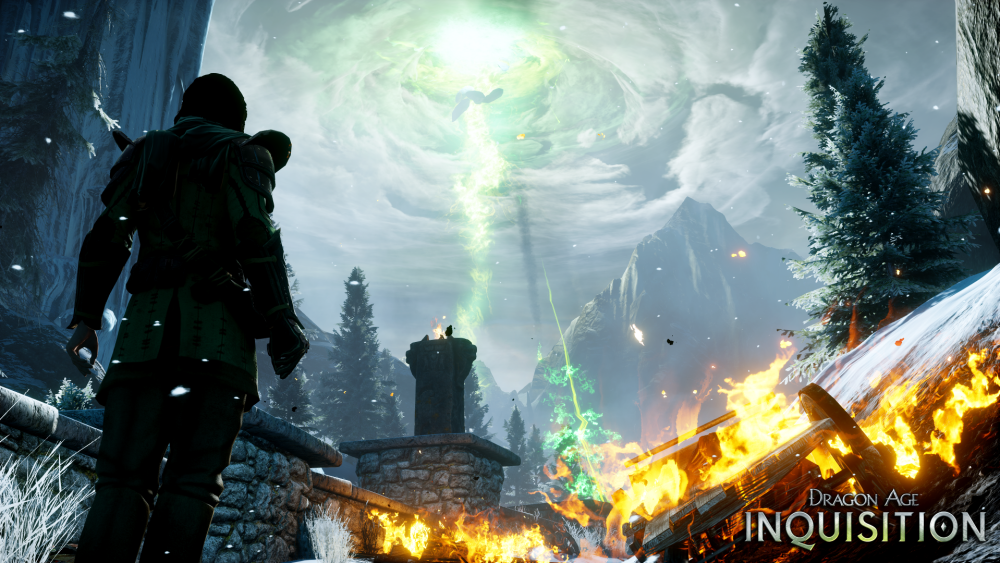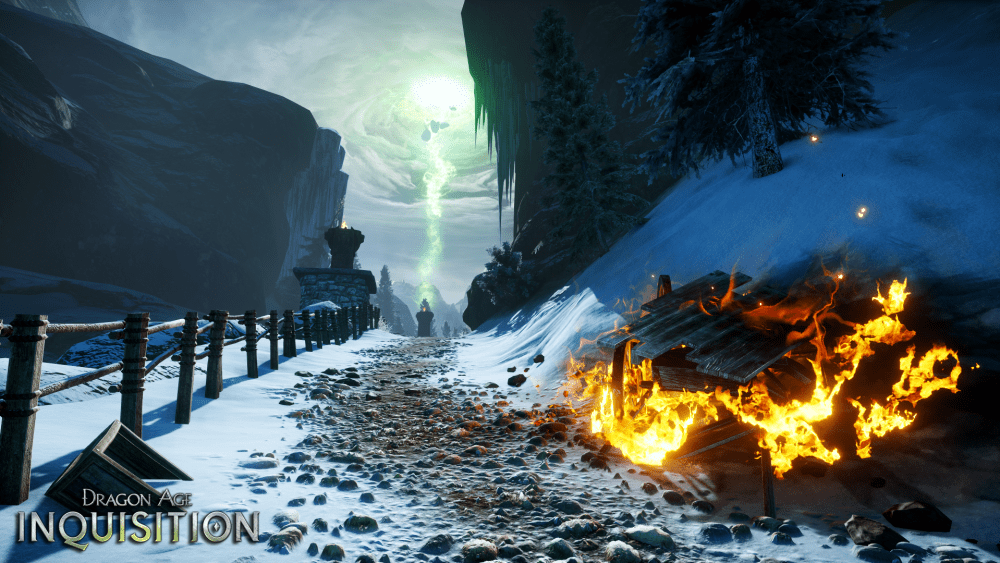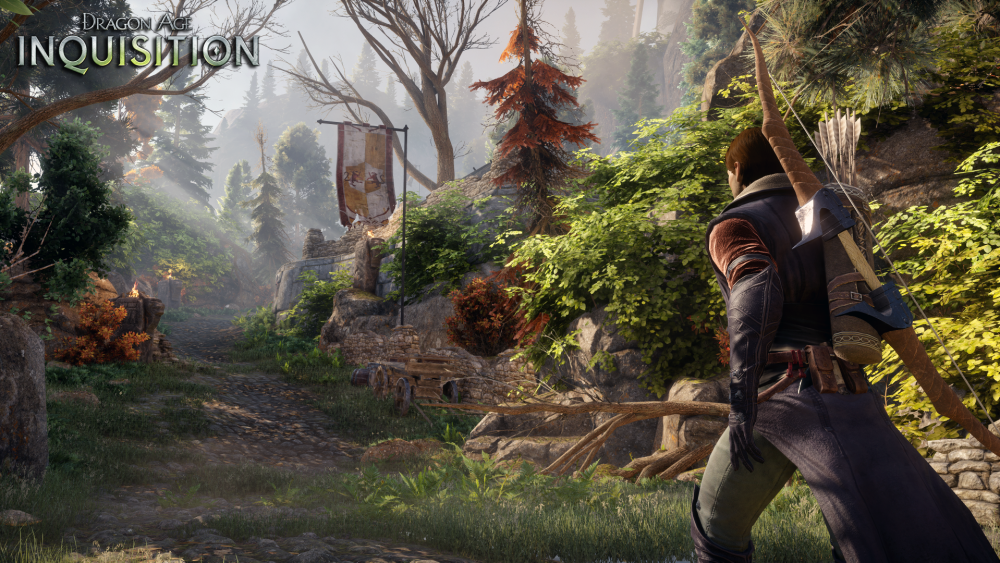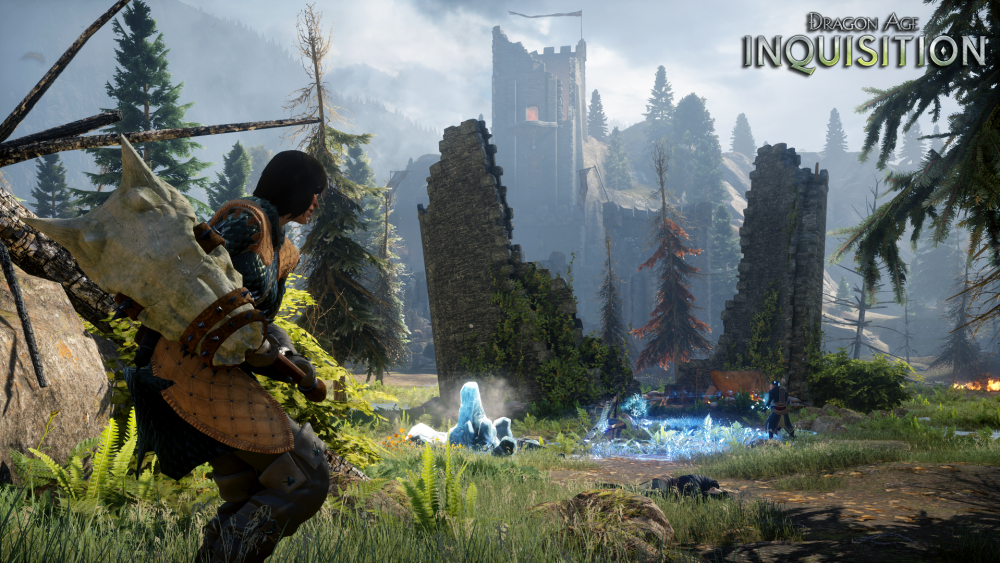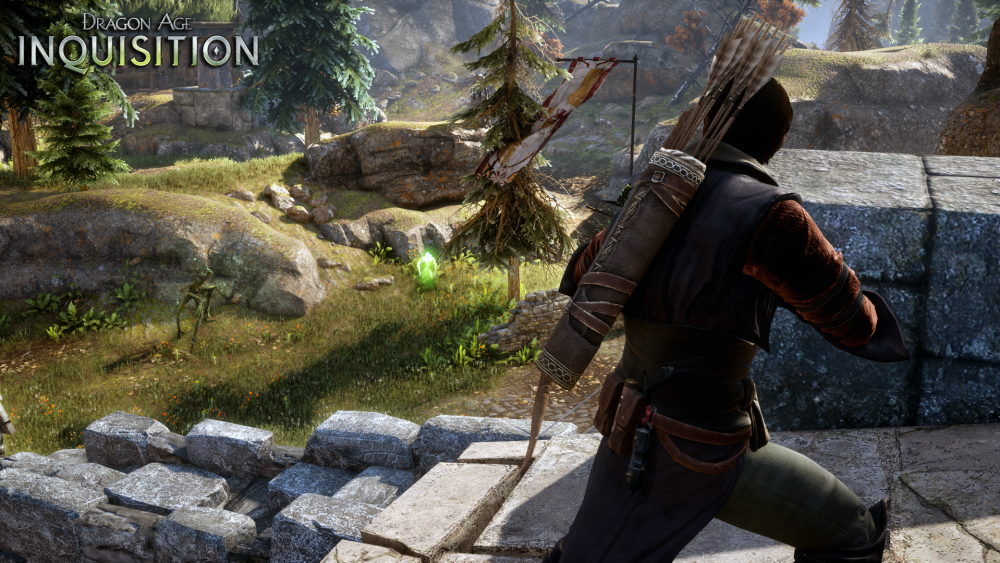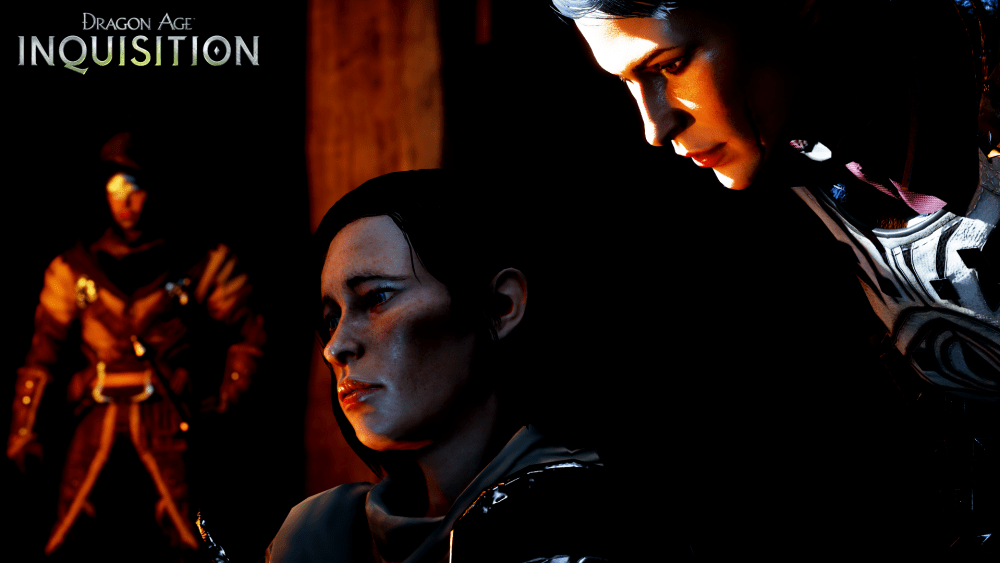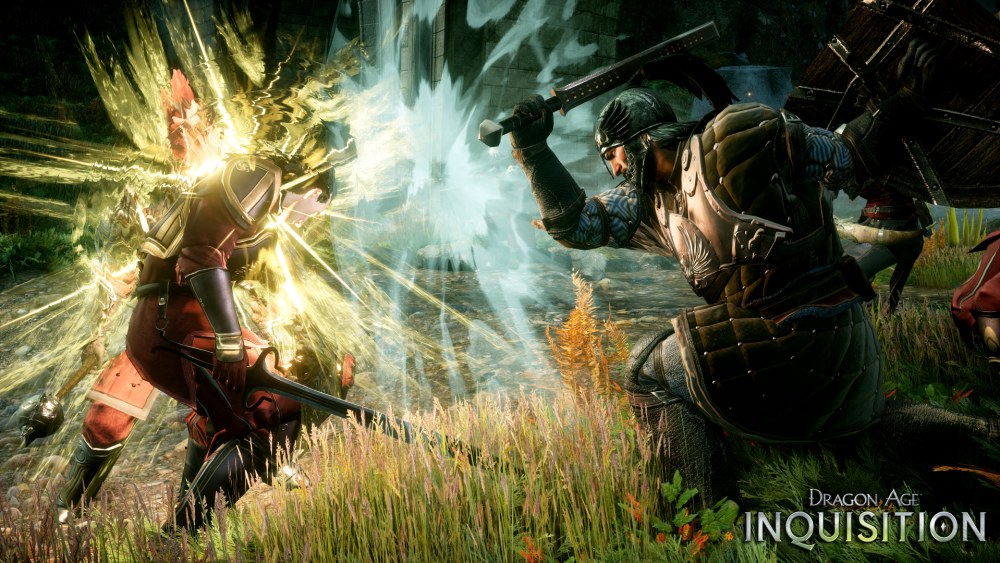Dragon Age: Inquisition had issues with Sony’s PlayStation 4 2.0 firmware update. GamesBeat’s review does not render any judgments on the co-operative campaign or mutliplayer because of this. –Ed.
Check out our Reviews Vault for past game reviews.
Dragon Age: Inquisition feels almost too big to exist at times.
BioWare has taken its fantasy role-playing game franchise into a colossal open world and a new console generation. I spent around 50 hours with the PlayStation 4 version of this massive fantasy adventure, and I could have easily doubled that. A continent-wide power struggle erupts in the realm of Thedas in the wake of the Breach, a sudden seam split into the sky that spews forth demons from the ethereal realm of the Fade. The mysterious Rift brings together formally antagonistic factions from across the world into a ramshackle army known as the Inquisition, giving the player the control of its growth and power. Is Dragon Age: Inquisition (out Nov. 18 for the PlayStation 4, Xbox One, PlayStation 3, Xbox 360, and PC) a worthy cause, or a fool’s errand?
What you’ll like
The stories you’ll discover
Inquisition spins its best yarns just outside the spotlight. You’ll be stumbling across enough loose lore material — in books, background dialogue, conversations with NPCs, etc. — to fill an encyclopedia series. Abandoned forest villas hide tales of domestic imprisonment, and more than a couple of companions work out their personal biases with each other in random, blink-and-you’ll-miss-it bursts. Thedas is a world filled with ambient narrative, all of it taking the risk of going unnoticed by players that just breeze through everything.
Inquisition’s strongest moment comes at a high-stakes gathering of nobles in the region of Orlais, when players can take their time in between cutscene setpieces to eavesdrop on salacious gossip or snoop around and find all of the grotesque secrets beneath the polished marble façades. Adventurers eager to get back into the action will miss the second and third act to the chapter, played out entirely outside dialogue trees.
It’s not too much of a backhanded compliment to say that BioWare’s best story work here is in the margins. The more effort you put into discovering the world and its inhabitants, the more chance you give yourself to stumble across an out-of-nowhere micro-drama or vignette that strikes an unexpected chord. Inquisition’s thrill of imminent discovery isn’t quite as pervasive as a Fallout or The Elder Scrolls, but what lies beneath is often better than what all of the important characters are talking about.
And yes, BioWare’s romance subplots are still delightful.
The natural diversity of Thedas
Think of a climate or geological region, and it is most likely represented in Dragon Age: Inquisition. Granted, you won’t be traveling to an Artic basin or the depths of an ocean, but your adventuring party will spend most of its time running or riding around deserts, forests, plains, a bog, and a massive stretch of highlands. Inquisition’s gargantuan world occupies a handful of large, self-contained regions accessed from a few hub spaces, like the titular force’s mountain stronghold. With a minimum campaign length of 60 or so hours (not counting any speed reading through conversations), swapping between these vast regions helps alleviate a lot of potential boredom.
Environmental effects like rain, snow, and dust really helps sell a sense of lived-in space. Your screen is consistently filled with flora and fauna or intersecting levels of craggy rock. Different regions also have their own architecture as well. Dwarven ruins are strikingly different from those of the elves, and snobbish Orlesian estates could never be mistaken for threatening, tribal aesthetics of the Tevinter Imperium.
The lighting engine spends every active moment sending rays through tree branches or illuminating dust particles in the blurry distance. The visual assault is ever present, and it rarely fails to showcase a screenshot-worthy view.
Forget all of the mythical creatures and pointy ears; Thedas is already too pretty to exist.
A continent of constant progress
I can recall no other game that rewards the player’s actions as frequently or as constantly as Dragon Age: Inquisition. Nearly everything you do, from uprooting plants to discovering landmarks, gets you another step closer to completing multiple tasks. And it has an excessive amount of things to do in Thedas. Glancing through lookout points highlights mysterious shards to collect for additional experience; telescopes offer glimpses into the sky where you can connect the stars to form constellations, building toward finding a secret, loot-heavy location on the map; and every region comes with multiple camp sites to set up and new areas to discover. This is in addition to roaming bands of enemies to attack, side quests to complete, and closing the rifts between dimensions that spawned from the Breach.
You have nine companions, each with multiple missions devoted to gaining their loyalty and/or wooing them. Skyhold, the Inquisition’s eventual mountainside fortress, can be aesthetically upgraded and populated with agents recruited from the world at large. The observant adventurer can find books, mosaic pieces, letters, and songs to add to the massive informational codex about Thedas and its inhabitants.
You can put items they gather toward an Inquisition Requisition, an order of materials required to further build up your growing forces through building new stables or studying poisons. You can also mine for ore and hunt animals for their hides in order to later craft armor and weapons. I had multiple points where it literally took a full 30 seconds for all of the progress bars to finish ticking off after I picked up a single Elfroot plant (you will never — I repeat, never — have enough Elfroot).
Spinning this many plates is initially overwhelming, but you face no limit to how many objectives you can have pending. You can even send the advisers of your Inquisition on missions for you, reading about their progress and gaining rewards once the timed duration of the mission is over. Once you settle into the world and figure out which type of missions or activities you want to prioritize, the groove can be addictive. That’s because, in addition to progress bars and experience points, all of your activities feed back into the central goal of the Inquisition.
Almost everything you can do eventually grants you Power and/or Influence. Power acts as a currency, unlocking new regions and occasionally expanding existing ones. Influence grants overarching benefits like additional inventory space or new dialogue options. It all helps feed into the general momentum Inquisition enjoys. By giving every action weight, BioWare creates an almost obsessive-compulsive need to see what’s behind every new hill.
What you won’t like
Combat grows stale
Fighting and talking are your main methods of progression in Dragon Age: Inquisition. And while BioWare retains its reputation for storytelling, combat doesn’t fare as well after the 20th hour. Your party splits across Rogue, Mage, and Warrior classes, each with a handful of skill trees filled with various abilities to learn. Every character also develops a distinct skill tree toward the middle, further diversifying their mid-combat options. And you can upgrade a laboratory’s worth of potions, tonics, and grenades to give out to each member of the party.
Players battle either in real-time or through a more strategic, freeze-frame approach. You can swap freely between these two tactics, as well as between each character you take into battle. Ally A.I. works impressively without your input, using potions sparingly and almost always using the most appropriate skill for every situation. But all of these layers eventually fall away as you mindlessly sink into the combat grind.
Inquisition’s difficulty curve is a numbers game, an escalation of defensive and offensive statistics without any real deviation in behavior patterns. You encounter the same types of enemies throughout your playthrough: agile thieves, teleporting and shielded mages, and heavily armored ground-pounders. The colors on the armor may change, but the method of attack doesn’t. Demons and mythical creatures fare worse, lacking the palette swap and getting their challenge uptick from just having more of them on the screen.
No real incentive exists to deviate from whatever pattern or strategy you discover and master within the first 10 hours. Later, stronger abilities just add more power or additional effects without ever shifting the scope, scale, or nature of battle. If you are more of a real-time fighter, you can eventually button-mash your way to victory in most bouts as elemental effects just become floating words amid the chaos. Those opting for the more strategic angle will eventually menu-surf to their preferred abilities and watch Inquisition play itself.
The tears at the open-world seams
The sheer amount of content begins as a blessing but slowly grows into a curse. For one thing, the graphical hiccups associated with open-world games are out in full force in Inquisition, slow loading textures and spastic character model twitching being the most common culprits. More important, Inquisition is the type of game where most players won’t likely use, or even know the existence of, entire features and mechanics. In one 12-hour gap, I simply forgot I had a horse, because the sense of speed while mounted didn’t feel fast enough to replace running around.
Crafting is another system that you eventually won’t bother with. The most useful armor or weapon sets require too many elements or components that are so rare to make the trip out to get them worth it, and your next favorite shield for your go-to warrior is likely just in the next chest you find. Upgrading weapons is satisfying and useful, but the runes to do so with are so rare and expensive that you’ll only remember that you have the option when you get a new one as a quest reward.
While none of this affects the core gameplay, it tends to give Inquisition a bloated feeling. A lot of these periphery mechanics will play to the aesthetic taste of some players, to be sure. But enough small missed opportunities build up over time to make most players feel like something’s wrong with their play style, a reason why they aren’t making more use out of these core-feeling features.
A main plot more interested in talk than action
If BioWare knows how to do one plot very well, it’s of the “assemble a team to fight a very big-evil” mold. While your team is full of the expected level of stellar, well-realized characters, its mission devolves into a lot of marching and monologues of how important their fight against the Breach is. A lot of this emptiness comes from its major show/tell discrepancy.
You learn how vast and diverse the Inquisition and its army are growing through expository text boxes and off-handed conversations. In between story missions, you even see your fortress grow to include the NPC agents you’ve recruited walking around the grounds. But when it comes to picturing your big, epic battles against the impending darkness, your glorious array of forces becomes a massive squad of bland-looking squires in identical armor. Whether you sided with the Templars or the Mages, an additional squad is fighting somewhere offscreen for the Inquisition, and one NPC or another will be on hand to tell you how happy they are with the arrangement.
Some characters will drop names of characters you saved or alliances you forged in the heat of battle, but you are never given a sense that it would have been different had you chosen the other side of an argument. Aside from one of the earlier missions in the story, most of your big decisions ultimately feel like they lead to the same fight approached the same way. For most games, this would be a cosmetic issue, chalked up to the cost of cutscene rendering. But for a game built around rooting your every move back into this central, growing force, you are never given a sense of how your specific actions affected that last grand siege. It doesn’t help that the main thrust of the story plays out over only a handful of missions, amounting to a fifth of the time spent in the world for most players.
It’s a shame, because the ultimate villain of Inquisition has some serious ambitions that go beyond the goals of most fantasy baddies. The doomsday scenario it paints is genuinely motivating, sold with an almost blasphemous, cataclysmic thrill. But everyone is all too eager to just talk you through it.
Conclusion
Dragon Age: Inquisition is a Schrodinger’s Goldilocks kind of a game: too big and just right at the same time.
The main campaign is more interested in telling you how great you are than letting you prove it, and combat feels designed for a game half this size. It’s not a far fall from grace, by any means, but it’s noticeable — and occasionally grating — in such a long experience. But if you have been working for the Inquisition for that long, hopefully by then you will be too busy discovering and exploring to care that much.
What BioWare has done better than most in the past is just as smooth and well-tended here. Characters are well-realized beings of desires and complications. The world of Thedas is an inviting glimpse into complicated fantasy, now with that new-generation gleam and polish. Add to that the Inquisition, a central narrative mechanic that will turn the speediest of speed-runners into an obsessive-compulsive herb picker, and the game is a worthy addition to a spectacular Western RPG franchise, only barely surpassed by Dragon Age: Origins.
Score: 87/100
Dragon Age: Inquisition releases Nov. 18 on the PlayStation 4, Xbox One, PlayStation 3, Xbox 360, and PC. The publisher provided GamesBeat with a physical PlayStation 4 copy of the game for the purposes of this review.


